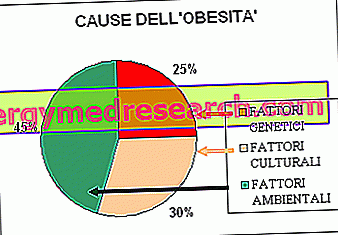Introduction
As we know, the pizza dough can be soft and fluffy, crumbly or spongy: these characteristics essentially depend on the type of flour used or, better to say, on the flour mixture.
The pizzas, like the focaccia, the savory pies and the baked specialties in general, can present themselves in a different way depending on the chosen flour. In fact, in addition to water, oil, salt and yeast, flour is a key ingredient in pizza making.

Type 00, 0, 1 and 2 flours
As is known, from the grinding of durum wheat semolina and semolina are obtained; instead, when the matrix is soft wheat, the final product is a white flour, particularly suitable for the preparation of bread and cakes. The white flour is distinguished according to the degree of sifting (processing process consisting in the separation of the flour from the bran):
- Type 00 white flour: 50% sifting rate (ideal for batters and desserts)
- Type 0 white flour: 72% water (excellent for bread, pizza, focaccia and leavened specialties)
- Type 1 flour: 80% watered
- Type 2 flour: 85% sifting degree
- Fior di farina: fine wheat powder, obtained from the innermost and softest part of the grain. Flour par excellence in confectionery production, qualitatively superior in terms of gluten.
- Whole flour: after grinding, this flour does not undergo further refining processes. It represents a good alternative to 0 flour, in order not only to prepare rustic doughs, but also to satiate and regularize the intestine, thanks to the preciousness in fibers.
Integral Pizza (Long Rising)
X Problems with video playback? Reload from YouTube Go to Video Page Go to Video Recipes Section Watch the video on youtubeChoice of flour
The premise is indispensable for giving a general picture of the various pizza mixes on the market. In general, the classic food mixture consists of a mix of type 0 and 00 wheat flour, as well as water, oil, salt and yeast. In order to obtain a rustic product, more full-bodied, rich and aromatic, a certain amount of whole or semi-refined flour can be added to the type 0 and 00 flour. When whole wheat flour is used, attention must be paid to the leavening time: in fact, these flours are richer in fiber and nutrients, which requires much longer leavening times than doughs with white flours. Furthermore, wholemeal flours used for pizzas are much more prone to deterioration and / or proliferation of bacteria.
It would be ideal to grind the wheat directly with small homemade mills, to obtain a better dough. However, the market offers many types of flour: it is preferable to opt for those of better quality.
The pizza is qualitatively superior when the flour used is obtained from organic and natural wheat, not treated with pesticides or chemicals. However, it would be good to observe the aforementioned consideration also in all other porridge-based foods, not only for the preparation of pizzas.
Other pizza flours
Wheat flour can be mixed with other flours: for example, wheat flour and small spelled flour or oat flour can be mixed in equal parts. For lovers of sweet flavors, it is advisable to add to the wheat flour even a part of almond flour: the latter not only softens the dough, but it certainly makes it more energetic.
For those who love spicy flavors, white flour can be enriched with spices and aromas, such as chopped coriander, chervil, oregano, etc.
For a less swollen dough, it is advisable to mix the wheat flour with the semolina.
Flour for pizza and celiac disease
Clearly, up to this point we have considered wheat flour, therefore absolutely forbidden for coeliacs. For patients suffering from celiac disease (gluten intolerance), pizza is not denied, as long as it is prepared with certified gluten-free flours, such as rice flour, soy, potatoes and corn.
Summary
Pizza flour: in short
| Flour for pizza | Leading ingredient for making pizzas, focaccias and savory pies: based on the flour used, a soft, soft, crumbly or spongy mixture will be obtained | |
| Types of flour | Type of flour Type 00 white flour Type 0 white flour (ideal for pizzas) Type 1 flour Type 2 flour Fior di farina: (ideal for pastry desserts) Whole flour (regularizes the intestine and satisfies) | Degree of sifting 50% 72% 80% 85% |
| The choice of pizza flour | There is no single type of flour for preparing pizzas. There are mixtures characterized by:
| |
| Flour for pizza and celiac disease | Absolute prohibition of consuming pizzas mixed with wheat flour (for celiacs). Possible mixtures with certified gluten-free flours | |



